Visiting the Mausoleum of Emperor Gaozong and Wu Zetian: A Must-See in China
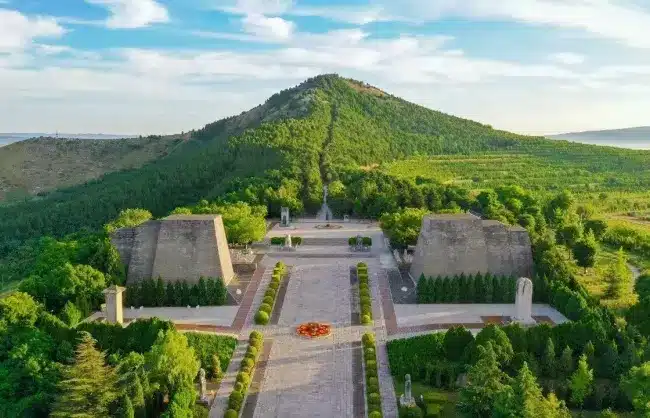
An Essential Guide to Visiting Mausoleum Of Emperor Gaozong Of Tang And Wu Zetian Qianling
In This Guide
- An Essential Guide to Visiting Mausoleum Of Emperor Gaozong Of Tang And Wu Zetian Qianling
- The Rich History and Legends of Mausoleum Of Emperor Gaozong Of Tang And Wu Zetian Qianling
- Main Highlights: What You Absolutely Can’t Miss
- Planning Your Visit: A Practical Guide
- Tickets: Prices, Booking, and Tips
- How to Get There: A Complete Transportation Guide
- Local Cuisine and Accommodation Nearby
- Frequently Asked Questions
- Final Thoughts on Your Trip
Discover the Legacy of an Empress and an Emperor
Nestled amidst the scenic beauty of Shaanxi Province, the Mausoleum of Emperor Gaozong of Tang and Wu Zetian, also known as Qianling, stands as a testament to one of the most fascinating periods in Chinese history. This site not only houses the remains of two pivotal figures of the Tang Dynasty—Emperor Gaozong and Empress Wu Zetian, the only woman to ever hold the title of emperor in China—but also encapsulates the rich tapestry of power, intrigue, and cultural achievement that defined their reign.
As you approach the mausoleum, you’ll be greeted by the majestic backdrop of the Lianshan Mountains, where nature and history intertwine. The mausoleum itself is not merely a tomb; it is an architectural marvel that reflects the grandeur of the Tang Dynasty, showcasing intricate stone carvings and an impressive spirit way lined with statues of dignitaries and warriors. Here, the echoes of the past resonate through the air, inviting visitors to immerse themselves in the stories of a formidable empress who rose from humble beginnings to become a powerful ruler.
What to Expect
Your visit to Qianling promises to be an enlightening journey through time. As you explore the expansive grounds, take note of the following highlights:
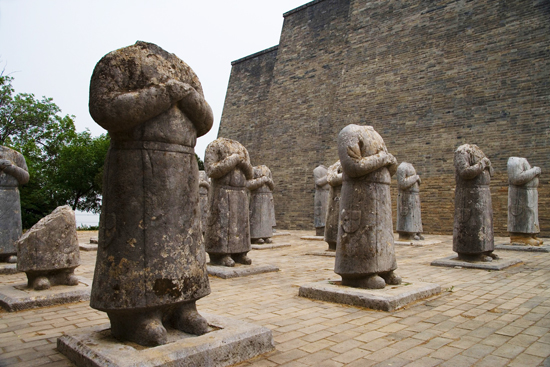
Mausoleum_Of_Emperor_Gaozong_Of_Tang_And_Wu_Zetian_Qianling.
- The Main Tomb: While the primary tomb is off-limits for exploration, you can climb to the summit of the pyramid-shaped structure for panoramic views of the surrounding landscape.
- Satellite Tombs: Enter some of the satellite tombs that house exquisite wall paintings and artifacts, offering glimpses into the opulent burial practices of the era.
- Stone Statues: Marvel at the detailed stone figures that line the spirit way, depicting foreign dignitaries and warriors who played significant roles in the Tang court.
Essential Tips for Your Visit
- Weather Considerations: There is little shelter at the site, so plan your visit on a clear day to fully enjoy the experience.
- Preparation is Key: Familiarize yourself with the history of Wu Zetian and Emperor Gaozong before your visit to enhance your understanding of the significance of the site.
- Getting There: The mausoleum is accessible via a convenient tourist bus from Xi’an, making it an easy day trip.
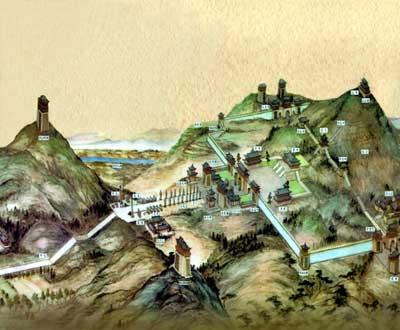
Mausoleum_Of_Emperor_Gaozong_Of_Tang_And_Wu_Zetian_Qianling.
Conclusion
Whether you are a history enthusiast, a lover of architecture, or simply looking to explore the cultural depths of China, the Mausoleum of Emperor Gaozong and Wu Zetian offers a unique and enriching experience. Here, in the heart of Qian County, the past comes alive, inviting you to walk in the footsteps of emperors and empresses, and to contemplate the legacies they left behind.
The Rich History and Legends of Mausoleum Of Emperor Gaozong Of Tang And Wu Zetian Qianling
The Mausoleum of Emperor Gaozong of Tang and Empress Wu Zetian, located in the serene Qianling area of Shaanxi Province, is a testament to one of the most fascinating epochs in Chinese history—the Tang Dynasty. This site is not just a resting place for two of China’s most significant historical figures, but also a symbol of power, intrigue, and the unique cultural tapestry of the era.

Mausoleum_Of_Emperor_Gaozong_Of_Tang_And_Wu_Zetian_Qianling.
A Legacy of Power and Prestige
Emperor Gaozong (Li Zhi) ascended to the throne in 649 AD, and his reign marked a period of significant military expansion and cultural flourishing. However, it was his remarkable wife, Wu Zetian, who would ultimately reshape the political landscape of China. Initially a concubine of Gaozong, Wu Zetian’s intelligence and ambition propelled her to unprecedented heights. After Gaozong’s death, she married his son and eventually declared herself the emperor, becoming the only female ruler in Chinese history. Her reign (690-705 AD) was characterized by progressive reforms, including the promotion of meritocracy in the civil service, which allowed individuals from lower social classes to ascend to power based on their abilities.
The Architecture of Qianling Mausoleum
Constructed in the 8th century, the Qianling Mausoleum reflects the grandeur associated with the Tang Dynasty. The tomb itself is designed in a pyramid shape and is set against the backdrop of the beautiful Lianshan Mountains. Visitors can explore the surrounding area, which is adorned with stone statues that depict military generals and dignitaries, symbolizing the vast empire over which Wu Zetian ruled. The spirit path leading up to the tomb is lined with these impressive sculptures, creating a mystical atmosphere that tells stories of reverence and respect for the deceased.
Hidden Treasures and Ongoing Mysteries
While the main tomb of Gaozong and Wu Zetian remains sealed, the complex includes satellite tombs that can be explored. These subterranean chambers house well-preserved artifacts, including intricate wall paintings and ornate sarcophagi, shedding light on the burial customs of the Tang Dynasty. Archaeologists continue to study the site, revealing that many treasures lie undiscovered, as methods for excavation and preservation are still being developed. There are whispers of damaged artifacts from previous dynasties, but the site remains a significant archaeological treasure waiting to be fully unveiled.
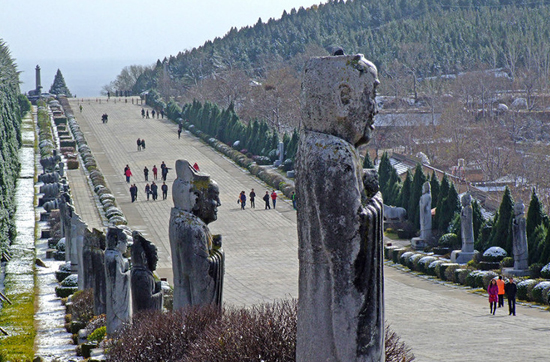
Mausoleum_Of_Emperor_Gaozong_Of_Tang_And_Wu_Zetian_Qianling.
Legends and Cultural Significance
The legends surrounding Wu Zetian are as rich and intricate as the history itself. Often portrayed as a formidable figure, she has been the subject of numerous tales that emphasize her cunning and intelligence. One popular legend suggests that she was not only a ruler but also a protector of the people, implementing policies that improved the lives of the common folk. Her ability to navigate the treacherous waters of court politics has led to her being both vilified and venerated in different narratives throughout history.
Visiting Qianling
For international travelers, visiting the Mausoleum of Emperor Gaozong and Wu Zetian offers an unparalleled glimpse into the past. While the site is less crowded than others, it provides a tranquil environment to reflect on the complexities of Chinese history. To make the most of your visit, consider exploring the surrounding hills, which offer stunning views and opportunities for hiking. Additionally, preparing by reading about Wu Zetian’s life and the Tang Dynasty will enrich your experience, allowing you to appreciate the significance of this remarkable site fully.
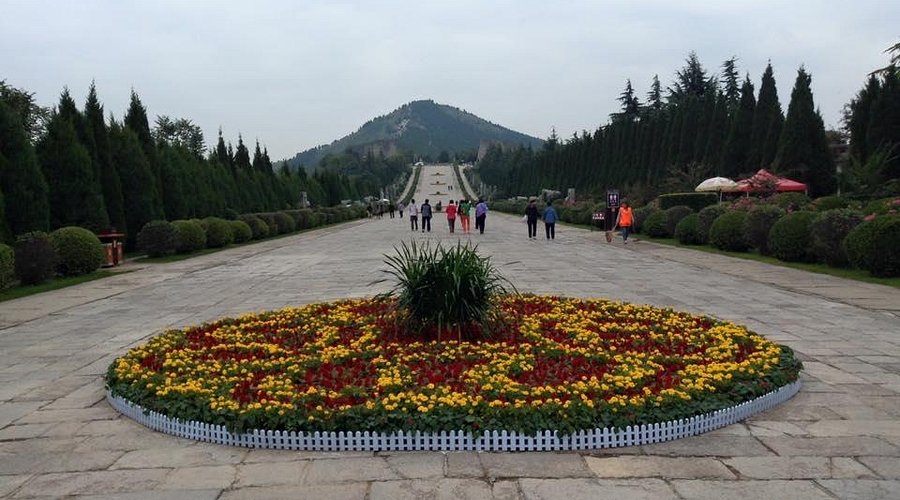
Mausoleum_Of_Emperor_Gaozong_Of_Tang_And_Wu_Zetian_Qianling.
In summary, the Qianling Mausoleum is not merely a grave; it is a narrative encapsulated in stone, a blend of history and legend that continues to intrigue and inspire. Whether you are a history buff or simply a curious traveler, this extraordinary site beckons you to uncover the legacy of one of China’s most enigmatic figures.
Main Highlights: What You Absolutely Can’t Miss
Discovering the Qianling Mausoleum: A Journey Through History and Culture
As you venture into the heart of Shaanxi province, the Qianling Mausoleum stands as a monumental tribute to one of China’s most enigmatic figures—Empress Wu Zetian, alongside her husband, Emperor Gaozong of Tang. This UNESCO World Heritage Site not only serves as a resting place for these significant leaders but also encapsulates the rich tapestry of the Tang Dynasty’s history. Here are the key highlights that you absolutely cannot miss during your visit.
1. The Majestic Tombs
At the core of the mausoleum complex lies the tomb of Empress Wu Zetian and Emperor Gaozong. While the primary tomb itself is inaccessible, you can climb to the top of the pyramid-shaped mound for a breathtaking view of the surrounding landscape. This elevation offers a unique perspective on the grandeur of the site and its historical significance.
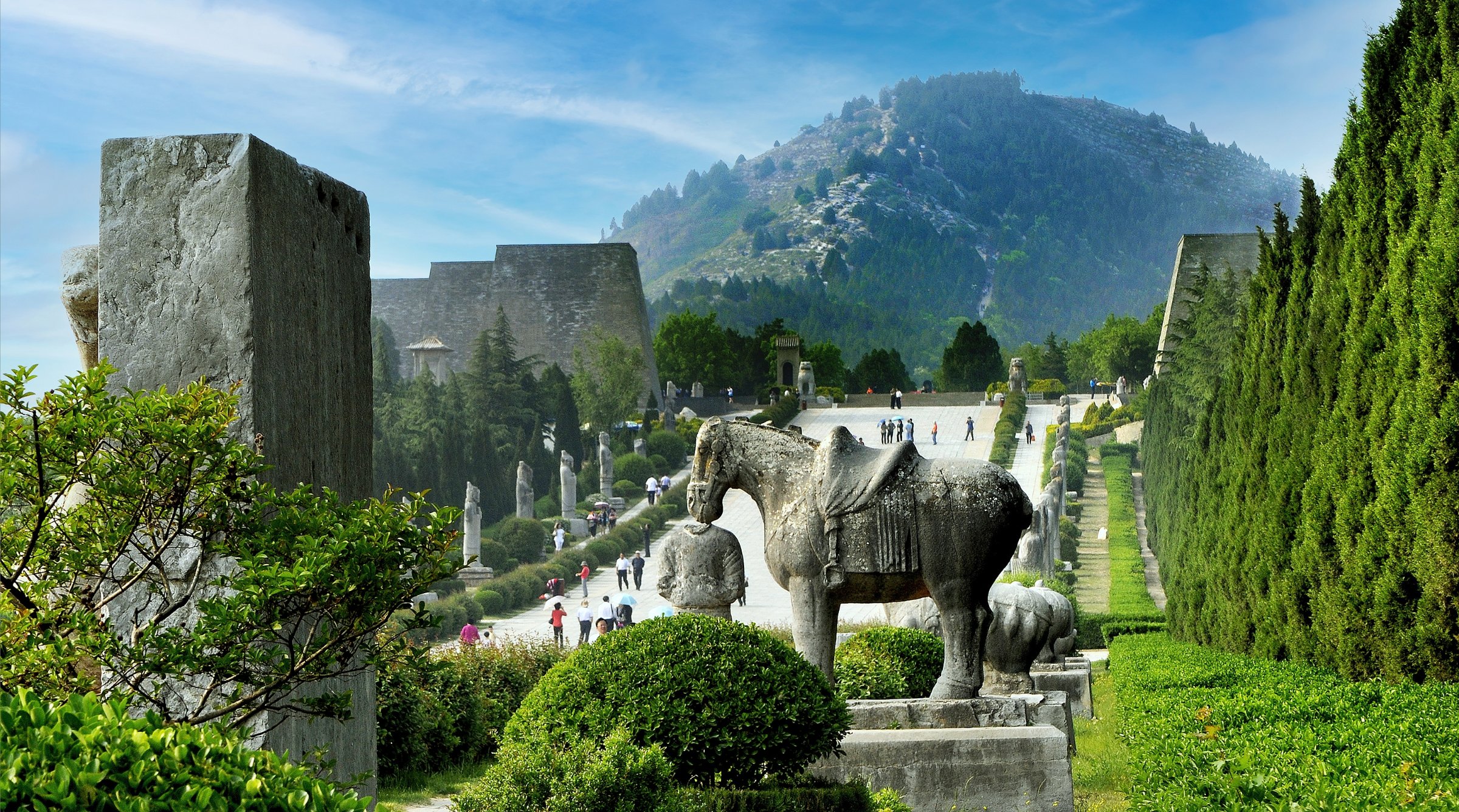
Mausoleum_Of_Emperor_Gaozong_Of_Tang_And_Wu_Zetian_Qianling.
2. The Spirit Way
Your journey begins along the Spirit Way (Shendao), a ceremonial path lined with life-sized stone sculptures of generals, animals, and dignitaries. This enchanting walk leads to the main tomb and serves as a poignant reminder of the honor bestowed upon emperors and empresses after their passing. Look closely at the intricately carved figures, many of which depict foreign dignitaries, reflecting the cosmopolitan nature of the Tang Dynasty.
3. The Satellite Tombs
Within the Qianling complex, you’ll find several satellite tombs—17 in total—where you can explore some of the best-preserved artifacts of the Tang era. Three of these tombs are open to the public, showcasing exquisite wall paintings, ornate decorations, and sarcophagi that provide insight into burial customs and art from the period.
4. Scenic Surroundings
The mausoleum is enveloped by the stunning Lianshan Mountains, providing a picturesque backdrop that enhances the site’s serene atmosphere. Take time to stroll through the scenic paths or even consider horseback or camel rides to explore the natural beauty of the area further. If possible, visit during a clear day to fully appreciate the majestic views.

Mausoleum_Of_Emperor_Gaozong_Of_Tang_And_Wu_Zetian_Qianling.
5. Qianling Museum
Adjacent to the mausoleum, the Qianling Museum offers a deeper understanding of the history and significance of the site. The museum houses a collection of artifacts unearthed from the tombs, including pottery, jewelry, and everyday items that paint a vivid picture of Tang life. It’s an essential stop for anyone keen on grasping the cultural context of the mausoleum.
6. Empress Wu Zetian’s Legacy
As the only female emperor in Chinese history, Wu Zetian’s life story is as captivating as the site itself. Take time to learn about her rise from a concubine to the supreme ruler of China and her contributions to the Tang Dynasty. Understanding her legacy adds profound depth to your visit, transforming it from a simple historical excursion into an exploration of female empowerment in ancient China.
Tips for Your Visit
- Weather Consideration: Due to the lack of shelter, plan your visit on a clear day to enjoy the outdoor elements comfortably.
- Preparation: Consider reading about the history of the Tang Dynasty and Wu Zetian before your visit to enrich your experience.
- Time Management: Allocate several hours to fully explore the area, including the scenic surroundings and museum.

Mausoleum_Of_Emperor_Gaozong_Of_Tang_And_Wu_Zetian_Qianling.
The Qianling Mausoleum is not just a collection of tombs; it is a vibrant testament to a transformative period in Chinese history. By immersing yourself in its history, art, and natural beauty, you will leave with a deeper appreciation for the legacy of the Tang Dynasty and its extraordinary rulers.
Planning Your Visit: A Practical Guide
Visiting the Mausoleum of Emperor Gaozong of Tang and Wu Zetian: Essential Information
Embarking on a journey to the Mausoleum of Emperor Gaozong of Tang and Empress Wu Zetian, known as Qianling (乾陵), offers a unique glimpse into one of China’s most illustrious dynasties. Nestled among the picturesque Lianshan Mountains in Shaanxi Province, this site is steeped in history and is a must-visit for those intrigued by Chinese culture.
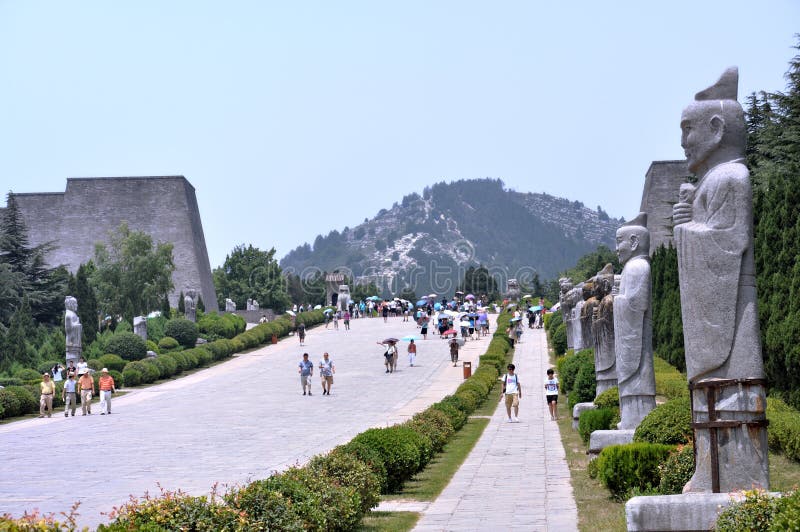
Mausoleum_Of_Emperor_Gaozong_Of_Tang_And_Wu_Zetian_Qianling.
Opening Hours
The mausoleum is open daily from 8:00 AM to 6:00 PM, allowing ample time to explore the expansive grounds.
Getting There
-
By Bus: From Xi’an, you can take the No. 3 Tourist Bus from the Xi’an Bus Station, which is well-marked in English. The cost is approximately £1.80 (or equivalent currency) and buses leave around 7:30 AM. Ensure you arrive early to secure a seat.
-
By Taxi: While taxis are available, they are less frequent, so plan your transportation accordingly.

Mausoleum_Of_Emperor_Gaozong_Of_Tang_And_Wu_Zetian_Qianling.
What to Expect
-
Weather Considerations: Ensure to check the weather before your visit. The site lacks shelter from rain and sun, making a clear day ideal for exploration.
-
Exploration: The mausoleum itself is a large complex featuring:
- The main tomb of Emperor Gaozong and Empress Wu Zetian, which remains intact and inaccessible.
- Satellite tombs that are open for exploration, showcasing well-preserved wall paintings and artifacts.
-
A long spirit path lined with impressive stone statues from the Tang dynasty, representing soldiers and dignitaries from various ethnic backgrounds.
-
Guided Tours: While you may not hire a guide, it’s highly recommended to do some reading on the history of Wu Zetian and the Tang dynasty beforehand. This will enhance your understanding and appreciation of the site.
-
Surrounding Nature: The tomb is surrounded by beautiful mountainous landscapes, perfect for leisurely walks. There are opportunities for horseback or camel rides if time allows.
Facilities and Amenities
- Museum: The nearby Qianling Museum offers additional insights into the artifacts discovered at the site, making it a worthwhile stop.
- Shuttle Service: A shuttle service is available to transport visitors to the nearby Famen Temple and other key locations within the area.
Tips for a Memorable Visit
- Plan for Time: Allocate at least 3-5 hours for your visit to fully experience the tombs, museum, and surrounding areas.
- Bring Essentials: Carry water, sunscreen, and hats to stay protected from the sun, especially during warmer months.
- Photography: Capture the stunning scenery and intricate carvings, but be mindful of any restrictions on photography in certain areas.

Mausoleum_Of_Emperor_Gaozong_Of_Tang_And_Wu_Zetian_Qianling.
With its rich historical significance and breathtaking natural beauty, the Mausoleum of Emperor Gaozong and Empress Wu Zetian is not just a visit to a tomb but an immersion into the grandeur of the Tang dynasty. Prepare yourself for an enlightening experience that bridges the past with the present.
Tickets: Prices, Booking, and Tips
When planning your visit to the Mausoleum of Emperor Gaozong of Tang and Wu Zetian at Qianling, understanding the ticketing process, prices, and some insider tips can enhance your experience at this historically rich site.
Ticket Prices
- General Admission: Approximately ¥70 (CNY) per person. This ticket grants access to the mausoleum grounds, including the surrounding archaeological sites and the Qianling Museum.
- Children and Seniors: Discounts may be available for children under a certain age and seniors, typically around ¥35 (CNY).
- Additional Costs: If you wish to explore the satellite tombs, which contain well-preserved artifacts and murals, there may be an extra charge. Expect to pay around ¥20 (CNY) for access to these tombs.

Mausoleum_Of_Emperor_Gaozong_Of_Tang_And_Wu_Zetian_Qianling.
Booking Information
- Online Reservations: To ensure a seamless visit, consider booking your tickets online in advance through reputable travel sites or the official Qianling site. This can help you skip the lines, especially during peak tourist seasons.
- On-Site Purchase: Tickets can also be purchased directly at the entrance. However, this could involve waiting in line, particularly during weekends and holidays.
Opening Hours
- The mausoleum is open daily from 8:00 AM to 6:00 PM. It’s advisable to arrive early to enjoy the site before the crowds build up and the midday heat sets in.
Tips for Your Visit
- Check the Weather: As there is minimal shelter on-site, plan your visit on a clear day. Rain or extreme sun can make your experience less enjoyable.
- Guided Tours: While you can explore independently, consider joining a guided tour for a richer understanding of the history and significance of the site, especially about Wu Zetian, China’s only female emperor.
- Preparation: Familiarize yourself with the historical context of the Tang Dynasty and the lives of Emperor Gaozong and Empress Wu before your visit. This background knowledge will greatly enhance your appreciation of the site.
- What to Bring: Wear comfortable shoes, as you’ll likely be walking a lot. Bring water and sun protection, particularly if you plan to explore the surrounding hills.
- Transportation: If traveling from Xi’an, take the No. 3 tourist bus to Qianling, which is not only economical but also convenient. Be sure to check the return schedule to avoid being stranded.
By following this guide, you’ll be well-prepared to explore the magnificent Mausoleum of Emperor Gaozong and Empress Wu Zetian, immersing yourself in the captivating history of the Tang Dynasty. Enjoy your journey through time!
How to Get There: A Complete Transportation Guide
Getting to the Mausoleum of Emperor Gaozong and Wu Zetian (Qianling)
Visiting the Mausoleum of Emperor Gaozong of Tang and Empress Wu Zetian offers a fascinating glimpse into China’s Tang Dynasty history. Nestled in the serene hills of Qian County, Shaanxi Province, this historical site is accessible through various modes of transportation. Here’s a comprehensive guide to help you reach this remarkable destination.
1. Arriving by Air
The nearest major airport is Xi’an Xianyang International Airport (XIY), located approximately 80 kilometers (50 miles) from the mausoleum.
- From Xi’an Xianyang International Airport:
- Taxi: A taxi ride will take around 1.5 hours and cost approximately 200-300 RMB (30-45 USD), depending on traffic.
- Airport Shuttle: Look for shuttles heading to downtown Xi’an, where you can connect to further transport options.
2. Traveling by Train
Xi’an is well-connected by high-speed trains from various major cities across China. If you’re coming from cities like Beijing, Shanghai, or Chengdu, this is a convenient option.
- From Xi’an Train Station:
- After arriving at the station, you can take a taxi or use public transport to reach the bus station for onward travel to Qianling.
3. Buses to Qianling
The most common method of reaching the mausoleum from Xi’an is by bus.
- Tourist Bus No. 3: This bus operates between Xi’an Railway Station and Qianling.
- Cost: Approximately 12 RMB (2 USD).
- Schedule: Buses typically depart around 7:30 AM, so arrive early to secure a seat as they can fill up quickly.
- Duration: The journey takes about 1.5 hours.
- Tips: Look for signs in English and images of the mausoleum on the bus.
4. Private Transport Options
For a more personalized experience, consider hiring a car or booking a private tour.
- Car Rentals: Various companies operate in Xi’an, but ensure you have an international driving permit and are comfortable navigating local road conditions.
- Private Tours: Many tour companies offer packages that include transportation, making your visit hassle-free. Some tours even combine visits to other nearby attractions like the Terracotta Warriors.
5. Local Transportation in Qianling
Once you arrive in Qianling, the mausoleum is situated within a scenic area that encourages exploration.
- Walking: The mausoleum area is expansive and best navigated on foot. Wear comfortable shoes, as you’ll want to explore the beautiful surroundings.
- Shuttle Services: If you prefer not to walk, shuttle services are available to transport visitors between various sites, including the satellite tombs and the Qianling Museum.
6. Practical Tips
- Weather Considerations: There is limited shelter at the mausoleum, so plan your visit for a clear day. Check the weather forecast and dress appropriately.
- Entrance Fees: Be aware that some areas may require separate entrance fees, particularly the museum and satellite tombs.
- Historical Context: Familiarize yourself with the history of Wu Zetian and the Tang Dynasty before your visit to enhance your experience.
By following this transportation guide, you can easily navigate your way to the Mausoleum of Emperor Gaozong and Wu Zetian and immerse yourself in the rich tapestry of China’s history. Enjoy your journey through time!
Local Cuisine and Accommodation Nearby
Exploring the Mausoleum of Emperor Gaozong and Wu Zetian is not just a journey into ancient history, but also an opportunity to savor the rich flavors of local cuisine and find comfortable accommodations nearby. Here’s a guide to enhance your visit to this remarkable site.
Culinary Delights
When you visit the Qianling area, don’t miss out on the chance to indulge in traditional Shaanxi cuisine, known for its bold flavors and diverse dishes. Here are some local favorites:
-
Biang Biang Noodles: These wide, hand-pulled noodles are a regional specialty, often served with a spicy sauce, topped with bits of vegetables and meat. The name itself is a mouthful, and the dish is a must-try for its unique flavor and texture.
-
Rou Jia Mo: Often referred to as Chinese hamburger, this dish consists of braised pork sandwiched in a flatbread. It’s a hearty, portable meal perfect for those exploring the area.
-
Yangrou Paomo: A traditional Shaanxi dish featuring shredded flatbread in mutton soup. The combination of tender lamb and flavorful broth makes it a comforting choice, especially after a day of exploring.
-
Shaanxi Snacks: Don’t overlook the variety of street foods available. From sweet cakes to savory dumplings, local vendors offer an array of snacks that reflect the region’s culinary heritage.
Nearby Accommodations
After a day of exploring the mausoleum and immersing yourself in history, you’ll want a comfortable place to unwind. Here are a few accommodation options in the vicinity:
-
Qianling Hotel: Situated close to the mausoleum, this hotel offers cozy rooms and a restaurant serving local dishes. It’s an excellent base for those wanting to explore the area further.
-
Xianyang International Hotel: A short drive from Qianling, this hotel provides modern amenities and comfortable accommodations. With a range of dining options and a welcoming atmosphere, it’s ideal for international travelers.
-
Shangri-La Hotel, Xi’an: For a more luxurious stay, this hotel is a bit further afield but offers top-notch service and amenities. With elegant rooms, exquisite dining options, and a convenient location, it makes for an excellent choice for those looking to indulge.
-
Hostels and Guesthouses: For budget travelers, there are several hostels and guesthouses in the nearby towns. They often provide a more intimate experience and a chance to meet other travelers.
A Perfect End to Your Day
After a day steeped in the history of the Tang dynasty, enjoying local dishes and resting in comfortable accommodations will enrich your experience. Whether you choose a local eatery or a luxurious hotel, the offerings near the Mausoleum of Emperor Gaozong and Wu Zetian promise to complement your journey through this fascinating corner of China. Embrace the culture, indulge in the cuisine, and let your adventure in Shaanxi unfold!
Frequently Asked Questions
Frequently Asked Questions about the Mausoleum of Emperor Gaozong of Tang and Wu Zetian Qianling
1. What is the significance of the Qianling Mausoleum?
The Qianling Mausoleum is a notable historical site as it is the burial place of Emperor Gaozong of the Tang Dynasty and his wife, Empress Wu Zetian, the only female emperor in Chinese history. This site highlights the political and cultural significance of the Tang Dynasty, showcasing the unique role of Wu Zetian in shaping Chinese history.
2. How do I get to the Qianling Mausoleum from Xi’an?
Travelers can easily reach the mausoleum from Xi’an by taking the No. 3 tourist bus from Xi’an Station. The journey takes approximately 1.5 hours. Buses are clearly marked in English, and it’s advisable to arrive early to secure a seat, especially during peak tourist seasons.
3. What are the opening hours of the Qianling Museum and Mausoleum?
The Qianling Museum and Mausoleum are open daily from 8:00 AM to 6:00 PM. It’s best to plan your visit accordingly, as the site does not offer shelter from rain or sun – so consider the weather conditions when you go.
4. Is a guided tour recommended when visiting the mausoleum?
While it’s possible to explore the mausoleum independently, hiring a guide can enhance your experience by providing in-depth insights into the historical significance of the site and its artifacts. However, many visitors have enjoyed the site without a guide, especially if they do a bit of research beforehand.
5. Are there any facilities at the site?
Visitors should be aware that there are limited facilities at the Qianling Mausoleum. There are no shelters, so it’s crucial to check the weather before your visit. Bring water and snacks, as you may not find many options nearby. Also, wear comfortable walking shoes, as exploring the area involves significant walking.
6. What can I expect to see at the mausoleum?
The mausoleum complex features a variety of attractions, including the main tomb of Emperor Gaozong and Empress Wu, as well as 17 satellite tombs that house beautifully preserved wall paintings and artifacts. Visitors can walk the spirit way lined with historical statues representing dignitaries who attended Wu Zetian’s funeral.
7. Is there an admission fee for the Qianling Mausoleum?
Yes, there is an admission fee to enter the Qianling Mausoleum and its museum. The fee may vary, so it is advisable to check current prices before your visit. Additional costs may apply for special exhibitions or shuttle services to other nearby attractions.
8. Can I explore the surrounding areas of the mausoleum?
Yes, the scenic mountainous area surrounding the mausoleum is perfect for exploration. Visitors can enjoy hiking, or for a unique experience, consider horseback or camel riding if time allows. The breathtaking views and tranquil atmosphere make it a worthwhile addition to your visit.
Enjoy your journey through this remarkable chapter of Chinese history!
Final Thoughts on Your Trip
As you wrap up your journey through the historical tapestry of the Qianling Mausoleum, allow yourself to reflect on the profound legacy of Emperor Gaozong and Empress Wu Zetian. This remarkable site is more than just a resting place; it is a testament to the complexities of power, gender, and culture during the Tang Dynasty, a golden age in Chinese history.
Embrace the Experience
-
Connection to History: Walking through the mausoleum grounds, surrounded by the majestic mountains and ancient statues, offers a unique opportunity to connect with a past that has shaped not just China, but the world. The stories of Wu Zetian, the only female emperor in Chinese history, and her husband resonate deeply, illuminating their remarkable contributions to governance and culture.
-
Scenic Beauty: The natural beauty enveloping the mausoleum enhances the experience. Whether you choose to hike the trails or simply take a moment to breathe in the tranquility, the picturesque landscape is a fitting backdrop to such an important historical site.
Tips for Future Visits
-
Research Ahead: To truly appreciate the significance of what you are seeing, consider doing some reading on the Tang Dynasty and the intricacies of Wu Zetian’s life before your visit. Understanding the context will enrich your experience manifold.
-
Timing Is Everything: Plan your visit for a clear day to fully enjoy the scenic vistas and avoid any discomfort from weather extremes, as there is little shelter on the grounds.
-
Avoid the Crowds: As this site is somewhat off the beaten path, you’ll find it less crowded than many other tourist attractions. Enjoy the peaceful atmosphere as you explore the mausoleums and the surrounding hills.
A Journey Worth Taking
In conclusion, your trip to the Mausoleum of Emperor Gaozong and Empress Wu Zetian is not merely a visit to a historical site; it’s an exploration of the enduring legacies of leadership, ambition, and resilience. Let the stories of the past inspire you as you return home, carrying with you a piece of the rich history that has defined this remarkable nation. As you leave, remember that the echoes of the Tang Dynasty are still alive,